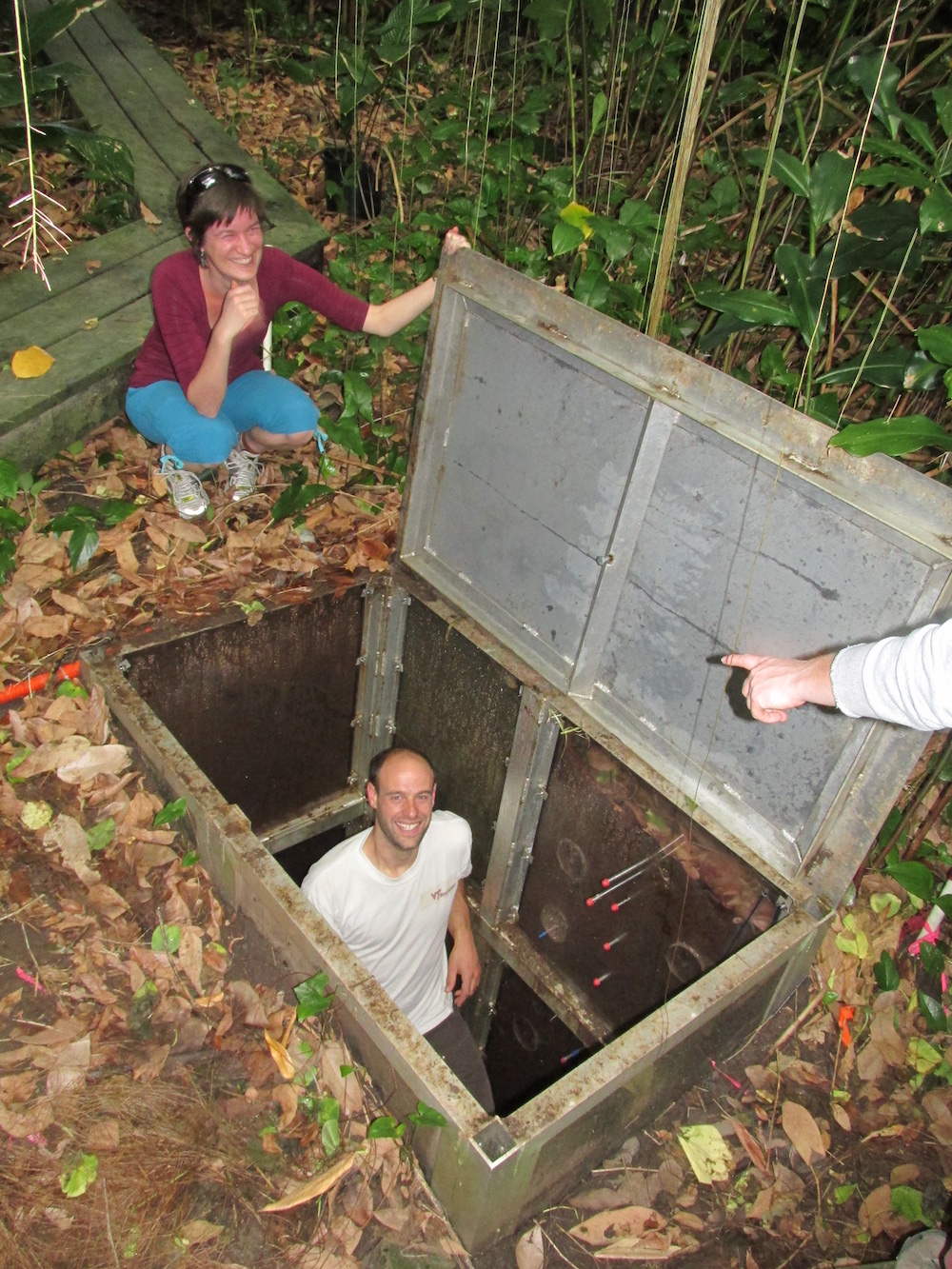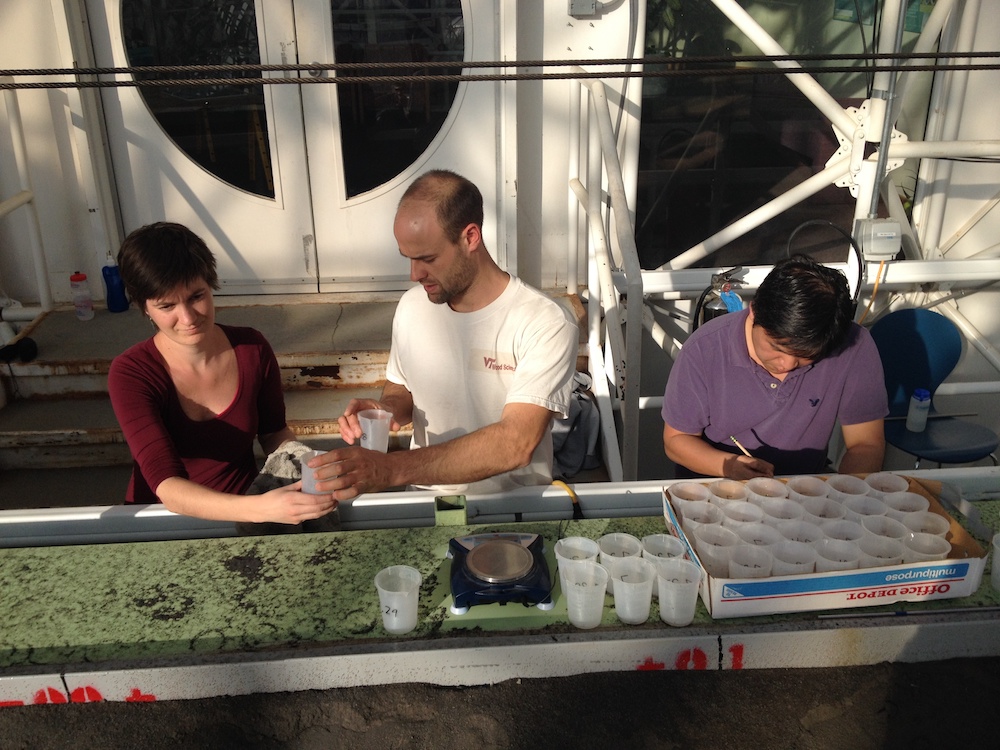
Lab trip to Biosphere 2, Arizona (continued...)
Lab trip continued...

Meanwhile, we are also devising some ideas for future ecohydrology research in the 25-year old rainforest biome here at Biosphere 2 with Joost van Haren. With Jaivime’s lead, we’re hoping to test for the existence of the ‘two water worlds’ hypothesis in this environment; and also, during a simulated drought in the biome, to determine how water-stressed conditions affects the depth of plant water uptake by roots. Next week, we will be taking preliminary rainfall and subsurface outflow samples, vegetation samples from the tree canopy, and soil samples from the three soil pits (right photo).
We’ve also had other visitors to Biosphere 2, including Scott Jasechko, a PhD student from the University of New Mexico. Scott gave a talk on his analysis of a global-scale compilation of river, lake and groundwater chemistry data. Specifically, his research focuses on separating evapotranspiration into fluxes of evaporation and transpiration using a global dataset of water isotope data. We’re looking forward to having Scott work with us in Saskatoon for three months from April 2014.
That’s all, for now. More updates to follow soon on our experimental goings-on (and maybe some photos of an upcoming lab trip to the Grand Canyon).
